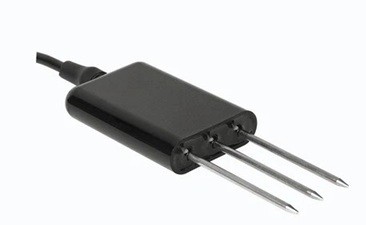
Smart Drip Irrigation: Sensor-Based Solutions for Water Scarcity and Salinity Control in Dubai
Dubai’s rapid urbanization and extreme climatic conditions pose significant challenges to sustainable landscaping. The city’s reliance on desalinated water and treated sewage effluent (TSE) for irrigation contributes to increasing soil salinity, a critical factor affecting plant health and water efficiency. With the UAE ranking among the world’s most water-stressed countries, innovative solutions such as smart drip irrigation systems equipped with salinity sensors and IoT-based automation are crucial for sustainable water management (FAO, 2021).
Integrating salinity sensors, soil moisture sensors, evapotranspiration (ET) sensors, and AI-driven automation allows Dubai to optimize irrigation, conserve water, and maintain soil health without over-reliance on costly desalinated water. This article explores how sensor-driven smart irrigation can revolutionize Dubai’s urban greenery by mitigating soil salinity and addressing water scarcity.
Dubai’s urban greenery depends on efficient irrigation strategies to combat water scarcity and soil salinity. With limited freshwater resources and an increasing reliance on desalinated water and treated sewage effluent (TSE), soil degradation is a growing concern. Smart irrigation, integrating IoT-driven sensors and AI analytics, offers a sustainable approach to optimizing water use and preventing salinity buildup.
Selecting the right sensors is crucial to achieving precision irrigation. Understanding sensor parameters ensures accurate monitoring, better decision-making, and efficient irrigation management.
1. The Challenge of Water Scarcity and Soil Salinity in Dubai
1.1. Water Scarcity and High Irrigation Demand
Dubai’s desert climate results in high evapotranspiration rates and minimal rainfall, necessitating large-scale irrigation to maintain urban landscapes. Traditional irrigation methods, such as flood or sprinkler irrigation, contribute to significant water loss through evaporation and runoff. Drip irrigation offers a more efficient alternative, but without real-time monitoring of soil conditions, overwatering and under-irrigation can still occur (Zhang et al., 2023).
1.2. The Impact of Soil Salinity on Urban Landscapes
Salinity accumulation occurs due to:
- Use of desalinated and treated wastewater – High sodium and chloride content affects soil permeability.
- Poor drainage and waterlogging – Without proper flushing, salts concentrate in root zones.
- Excessive evaporation – Dubai’s climate exacerbates salt accumulation by pulling water to the surface, leaving behind mineral deposits.
Increased soil salinity reduces plant health, limits water absorption, and damages root structures, making it essential to monitor and regulate salt concentrations using advanced irrigation technologies (Al-Nasser et al., 2022).
Key Sensor Types & Selection Parameters for Smart Irrigation
1. Salinity Sensors (Electrical Conductivity Sensors)
Function: To detect salt levels and measure electrical conductivity (EC) in soil and irrigation water.
Selection Parameters:
✅ Measurement Range: Must cover 0–20 dS/m to detect varying salinity levels in Dubai’s diverse soil conditions.
✅ Accuracy: High precision (±0.1 dS/m) to avoid incorrect irrigation adjustments.
✅ Response Time: Fast response (<10 sec) for real-time salinity management.
✅ Temperature Compensation: Essential for correcting readings in extreme heat conditions.
✅ Durability & Water Resistance: Must withstand harsh desert environments and irrigation exposure.
2. Soil Moisture Sensors
Function: Monitors soil water content to prevent over- or under-irrigation.
Selection Parameters:
✅ Measurement Depth: Choose 10–30 cm probes for shallow-rooted plants and deeper probes for trees.
✅ Soil Type Calibration: Must support sandy, loamy, and clay soils for accuracy.
✅ Power Consumption: Low-energy sensors (10-50 mA) for long-term deployment.
✅ Wireless Connectivity: Supports LoRaWAN, NB-IoT, or Zigbee for remote monitoring.
3. Evapotranspiration (ET) Sensors
Function: Measures humidity, temperature, wind speed, and solar radiation to adjust irrigation based on real-time plant water needs.
Selection Parameters:
✅ Weatherproof Design: Resistant to high temperatures (>50°C) and dust storms.
✅ Wind Speed Sensitivity: Measures as low as 0.1 m/s to detect microclimate variations.
✅ Integration Capability: Should sync with salinity and moisture sensors for holistic control.
4. Flow & Leak Sensors
Function: Detects leaks, pressure drops, and flow rates to prevent water wastage.
Selection Parameters:
✅ Flow Rate Sensitivity: Supports low-flow drip irrigation (0.1–50 L/h).
✅ Pressure Range: Operates in low-pressure systems (1–3 bar) without inaccuracies.
✅ Leak Detection Precision: Capable of detecting minor leaks (1-5%) in the system.
5. Rain & Weather Sensors
Function: Monitors rainfall and climate conditions to prevent unnecessary irrigation.
Selection Parameters:
✅ Rainfall Sensitivity: Detects as little as 0.2 mm of rain for precise irrigation pausing.
✅ Data Logging Capability: Stores historical climate data for AI-based predictions.
✅ Power Source: Solar-powered for long-term outdoor deployment.
AI-Enabled Sensor Integration: Benefits & Applications
Integrating multiple sensors with AI analytics enhances irrigation efficiency:
🔹 Automated Salinity Management: AI predicts salt buildup trends, triggering targeted leaching cycles only when needed.
🔹 Dynamic Irrigation Adjustments: AI synchronizes moisture, ET, and salinity data for real-time irrigation optimization.
🔹 Leak Prevention & Cost Savings: Early leak detection reduces water waste by 30-50%, cutting operational costs.
By selecting high-precision sensors with reliable connectivity and real-time response, Dubai can maximize irrigation efficiency, reduce salinity risks, and ensure sustainable urban landscaping.
With growing water scarcity and rising soil salinity, Dubai’s urban landscapes require a technological overhaul. Smart drip irrigation with integrated salinity sensors and AI automation presents a viable solution to conserve water, maintain soil health, and reduce reliance on desalinated water. By investing in data-driven irrigation systems, Dubai can pioneer sustainable urban greening for future generations.
As global climate challenges intensify, the UAE’s commitment to smart water management will position it as a leader in sustainable landscaping and irrigation efficiency.
References
- FAO. (2021). Water Scarcity in the Middle East: Sustainable Irrigation Strategies.
- Zhang, X., et al. (2023). Advances in Salinity Sensors for Precision Agriculture and Smart Irrigation.
- Al-Nasser, M., et al. (2022). Smart Irrigation Strategies for Arid Regions: A Case Study in the UAE.
- Rasheed, T., & Al-Rashed, A. (2020). Water Management Technologies in the GCC: Innovations and Challenges.
- Basso, B., et al. (2022). Precision Agriculture & Soil Moisture Management in Arid Climates.



